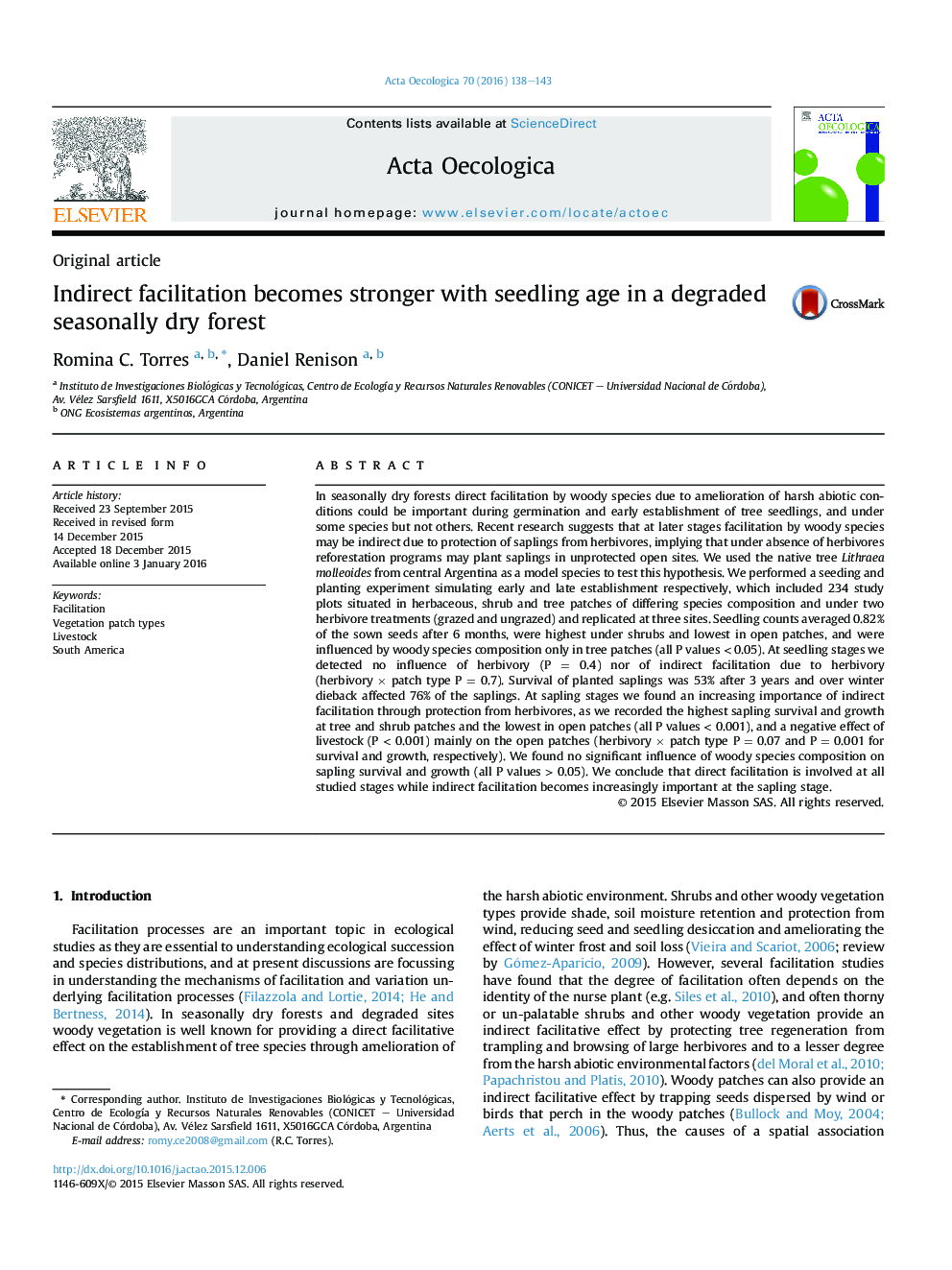| کد مقاله | کد نشریه | سال انتشار | مقاله انگلیسی | نسخه تمام متن |
|---|---|---|---|---|
| 4380809 | 1617702 | 2016 | 6 صفحه PDF | دانلود رایگان |
• We studied facilitation in tree establishment in a degraded seasonally dry forest.
• At seedling stage we found an effect of direct facilitation by woody plants.
• At sapling stage we found direct and indirect facilitation by woody plants.
In seasonally dry forests direct facilitation by woody species due to amelioration of harsh abiotic conditions could be important during germination and early establishment of tree seedlings, and under some species but not others. Recent research suggests that at later stages facilitation by woody species may be indirect due to protection of saplings from herbivores, implying that under absence of herbivores reforestation programs may plant saplings in unprotected open sites. We used the native tree Lithraea molleoides from central Argentina as a model species to test this hypothesis. We performed a seeding and planting experiment simulating early and late establishment respectively, which included 234 study plots situated in herbaceous, shrub and tree patches of differing species composition and under two herbivore treatments (grazed and ungrazed) and replicated at three sites. Seedling counts averaged 0.82% of the sown seeds after 6 months, were highest under shrubs and lowest in open patches, and were influenced by woody species composition only in tree patches (all P values < 0.05). At seedling stages we detected no influence of herbivory (P = 0.4) nor of indirect facilitation due to herbivory (herbivory × patch type P = 0.7). Survival of planted saplings was 53% after 3 years and over winter dieback affected 76% of the saplings. At sapling stages we found an increasing importance of indirect facilitation through protection from herbivores, as we recorded the highest sapling survival and growth at tree and shrub patches and the lowest in open patches (all P values < 0.001), and a negative effect of livestock (P < 0.001) mainly on the open patches (herbivory × patch type P = 0.07 and P = 0.001 for survival and growth, respectively). We found no significant influence of woody species composition on sapling survival and growth (all P values > 0.05). We conclude that direct facilitation is involved at all studied stages while indirect facilitation becomes increasingly important at the sapling stage.
Journal: Acta Oecologica - Volume 70, January 2016, Pages 138–143
